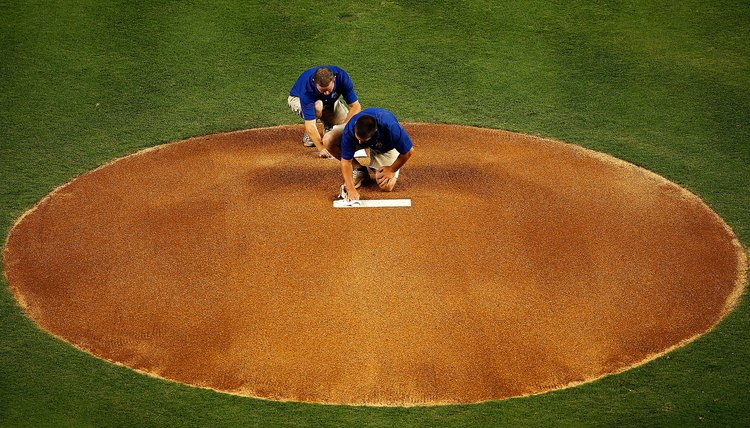How to Measure Distances for the Pitching Rubber

The dimensions and layout of a baseball infield are strictly defined by major league baseball rules. Consequently, for regulation play, it is important to follow these rules correctly. The trick to determining the distance to the pitching rubber from home plate is to realize that home, the rubber and second base must be laid out in a straight line. If you are building a baseball field for age-group competition, the dimensions may vary. Consult your league rulebook for the proper distance for Little League and other age-group competition.
Set home plate in the position where it will be located for games. The apex (pointed side) should face directly away from the field. Use a metal peg or other marker driven into the ground to permanently mark the placement of home plate.
Starting from the tip of the apex at the back of home plate, measure a distance of exactly 127 feet, 3 3/8 inches to where you want to position second base. This point will be the center of the base. Again, install a marker peg to identify the location.
Stretch a string from the back of home plate to second base. Measure a distance along the string from the back of home plate of exactly 60 feet and 6 inches. This is the point that will be the center of the pitching rubber. Place a marker peg to mark the position of the rubber.
References
Writer Bio
Based in Atlanta, Georgia, W D Adkins has been writing professionally since 2008. He writes about business, personal finance and careers. Adkins holds master's degrees in history and sociology from Georgia State University. He became a member of the Society of Professional Journalists in 2009.
